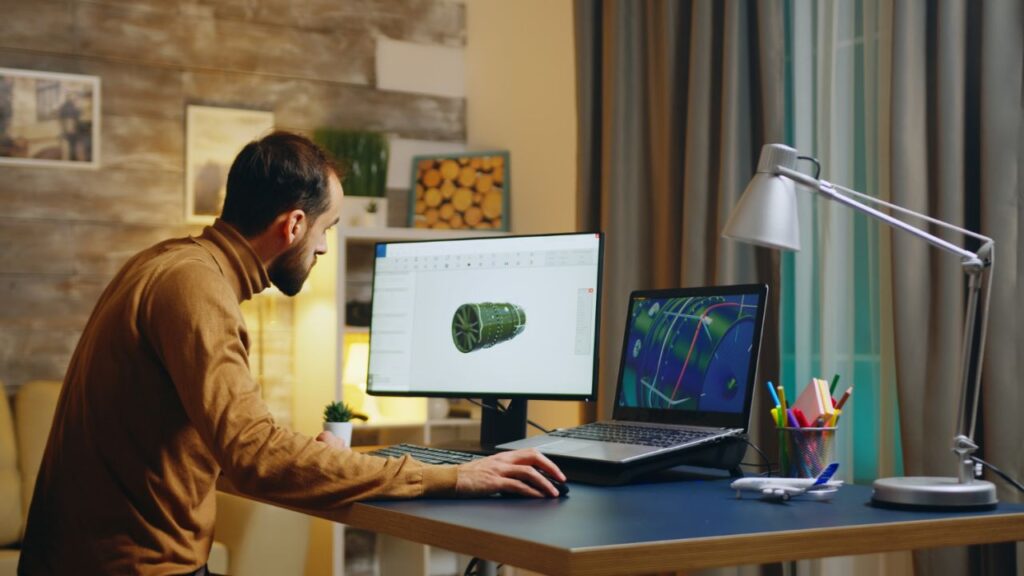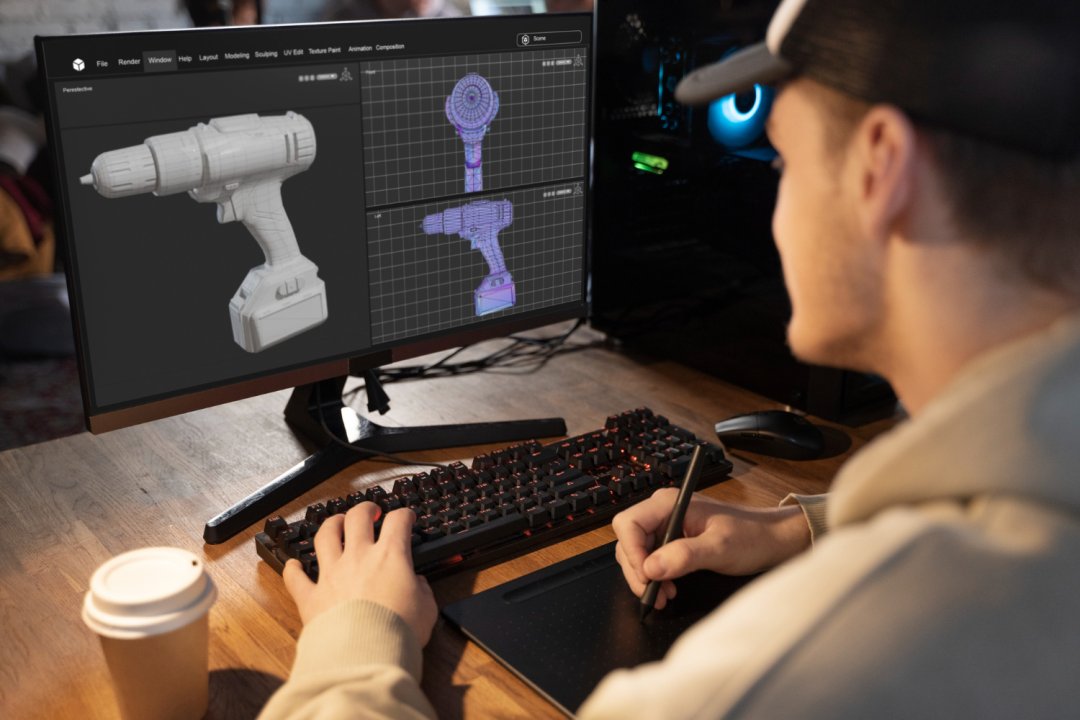We all get fascinated while watching animated movies, video games, and visual effects. The skillful animation, stunning graphics, and mesmerizing effects spark a sense of wonder and excitement. As we enjoy these visuals, we become part of the adventure. The creativity in 3D animation and the expertise behind it is truly inspiring. If you’ve ever dreamed of mastering this craft, learning how to become a 3D animator can help you turn imagination into reality.
3D animation is a captivating and dynamic field that has found applications in various industries, from film and gaming to advertising and architecture. That’s why an animator must be dedicated, continuously learn new skills, and passionate about their work. In this comprehensive guide, you’ll learn achieving the necessary skills and education to creating a standout portfolio and landing your dream job.
The 3D Animation Industry: High Demand, Lucrative Opportunities
There is a huge need for 3D animation in a variety of fields, including gaming, film, and advertising. Skilled and professional animators are benefiting from high earnings and lots of potential for career advancement. The industry offers a variety of opportunities, whether for freelance workers or in-house artists. A profession in 3D animation provides both creativity and financial success with remote work opportunities and a growing market.
How To Become a 3D Animator: Essentials Steps to Follow
The ability to bring characters and objects to life in three-dimensional space is a skill that is now in high demand. A career as a professional 3D animator allows you to unleash your creativity and bring your imagination to life.
If you’ve ever dreamed of becoming a 3D animator, you’re in the right place.Here are some guidelines to start your career as a 3D animator.
Step 1: Understand the Basics
Animation is the art of making objects appear as if they’re moving or alive. It takes this concept to the next level by creating a three-dimensional illusion, adding depth, and making characters and scenes more lifelike. Before diving into the world of 3D animation, it’s essential to grasp the fundamentals. This foundational knowledge will serve as your roadmap as you progress.
Animation Principles: You have to learn about essential animation principles like timing, spacing, and squash and stretch.
Software Familiarity: Get comfortable with popular 3D animation software such as Autodesk Maya, Blender, or Cinema 4D.
Storytelling: Storytelling and character development play a crucial role in 3D animation. So, understand how these works actually.
Step 2: Acquire the Necessary Skills
Becoming a skilled 3D animator requires several skills. You can start by immersing yourself in the world of animation. Moreover, watch animated films, TV shows, and video games. Pay attention to the details, the character movements, and the storytelling techniques. Then analyze how you can make the animations compelling and emotionally engaging.

Animation Software Proficiency: You need to be proficient in using industry-standard 3D animation software such as Autodesk Maya, Blender, 3ds Max, or Cinema 4D.
3D Modeling: 3D modeling principles is essential. It allows you to create and modify 3D characters, objects, and environments for your animations.
Character Rigging: Rigging involves setting up the virtual skeletons and controls for characters to make them move realistically. For this you have to learn the anatomy and movement.
Keyframe Animation: Creating keyframes and interpolate between them is a fundamental skill for animators. So that you can create smooth and convincing motion.
Rendering: Get familiar with the rendering process, including adjusting render settings and optimizing scenes for final output. It is necessary for producing high-quality animations.
Physics and Dynamics: Some animations may require realistic physics and dynamics simulations. Thats why a basic understanding of these concepts can be helpful.
Step 3: Choose the Right Education Path
While formal education is not always mandatory it can provide valuable guidance and networking opportunities. So you might consider the following options such as:
Bachelor’s Degree: While some 3D animators are self-taught, pursuing formal education can add an extra mark to your career. For instance- a degree in Animation, Computer Graphics, or a related field from a reputable university or art school.

Online Courses: Moreover, you can enroll in relevant courses and tutorials. There are many online platforms that you can learn from, such as Coursera, Udemy, or LinkedIn Learning. If you are interested joining classes offline, you can check out the best IT training institutes that offer this 3D animation course.
Workshops and Seminars: Attend animation workshops and seminars to learn from industry professionals. Hence this kind of relevant program can boost up your learning and provide you with valuable insights and networking opportunities.
Step 4: Build Your Resume and Portfolio Website
Highlight your skills, and accomplishments clearly and visually on your resume. Add experience if you have worked with a company or else show your skills and areas of expertise that can impress the hiring manager.
Your portfolio is your calling card in the world of 3D animation. Create a diverse collection of animation works that showcase your skills and creativity. Depending on your interests, you can include projects that demonstrate your ability to handle different animation styles. From character animation to architectural visualization. Your portfolio can serve as an important tool when you are looking for internship or job opportunities.
Step 5: Stay Updated and Network
The field of 3D animation is continuously changing. By participating in online forums, following industry blogs and attending workshops you can stay updated with the latest software, techniques and industry trends.
Networking is one of the most important factor in any industry. This can lead to job opportunities and collaborations. So, attend industry events, connect with professionals on LinkedIn, and engage in online communities.When you’re ready, start applying for positions that align with your career goals.
Step 6: Land Your Dream Job
If you want to gain practical experience, you need to do projects and prepare for interviews and animation tests at animation studios and production companies. With a strong skill set, an impressive portfolio, and a network of contacts, you’re well-prepared to pursue your dream job as a 3D animator. Hence you can,
- Seek Internships
- Freelance Work
- Entry-Level Positions
Step 7: Persistence Pays Off
To become a successful 3D animator takes time, dedication, and persistence. So don’t get discouraged by challenges. Keep refining your skills, learning, and adapting to changes in the 3D animation industry. Your passion and determination will ultimately lead to a fulfilling career in the world of animation.
Conclusion
Becoming a 3D animator is a challenging but rewarding journey. You can turn your dream into a thriving career in 3D animation with the right skills, education and a strong passion for storytelling through animation. With the following steps now you know how to become a 3D animator.
Just remember that every step you take, from learning the basics to building a strong portfolio, brings you closer to your goal of becoming a skilled 3D animator in the industry. Start animating from today and bring your imagination to life in the 3D world of animation.

